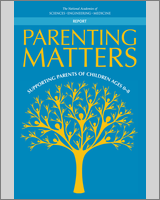From: 4, Universal/Preventive and Widely Used Interventions

NCBI Bookshelf. A service of the National Library of Medicine, National Institutes of Health.
| Outcome | |||||
|---|---|---|---|---|---|
| Positive Parenting Practices | Family Economic Self-Sufficiency | Child Health | Child Development and School Readiness | Reductions in Child Maltreatment | |
| Child FIRST | Not measured | Not measured | Not measured | 5/16 | 1/3 |
| Durham Connects/Family Connects | Not measured | Not measured | 6/9 | Not measured | Not measured |
| Early Head Start-Home Visiting | 3/28 | Not measured | Not measured | 2/36 | Not measured |
| Early Intervention Program for Adolescent Mothers | 0/9 | Not measured | 8/18 | Not measured | Not measured |
| Early Start (New Zealand) | 3/3 | Not measured | 2/4 | 2/6 | 1/2 |
| Family Check-Up for Children | 2/2 | Not measured | Not measured | 3/14 | Not measured |
| Family Spirit | 0/5 | Not measured | Not measured | 10/40 | Not measured |
| Health Access Nurturing Development Services | Not measured | 2/3e | 6/9 | Not measured | 1/1 |
| Healthy Beginnings | Not measured | Not measured | 1/3 | Not measured | Not measured |
| Healthy Families America | 2/50 | Not measured | 0/9 | 9/43 | 1/34 |
| Healthy Steps f | 0/1 | Not measured | 2/2 | 0/2 | Not measured |
| Home Instruction for Parents of Preschool Youngsters | 1/10 | Not measured | Not measured | 3/20 | Not measured |
| Maternal Early Childhood Sustained Home-Visiting Program | 1/6 | Not measured | 0/3 | Not measured | Not measured |
| Minding the Baby | 0/2 | Not measured | 1/2 | Not measured | 0/1 |
| Nurse-Family Partnership | 4/22 | 4/21a | 4/30 | 5/59 | 7/25 |
| Oklahoma's Community-Based Family Resource and Support Program | 2/7 | Not measured | Not measured | Not measured | Not measured |
| Parents as Teachers | 3/50b | 1/1 | 0/1 | 7/66c | 1/3 |
| Play and Learning Strategies-Infant | 11/24d | Not measured | Not measured | 1/16 | Not measured |
| SafeCare Augmented | Not measured | Not measured | Not measured | Not measured | 1/6 |
NOTE: The table shows the number of favorable outcomes relative to the total number of outcomes. Footnotes indicate when the total number of outcomes includes an unfavorable or ambiguous outcome(s). In accordance with www
One of the three outcomes were unfavorable or ambiguous.
This report focuses on Healthy Steps as implemented in the 1996 evaluation. HHS has determined that home visiting is not the primary service delivery strategy and the model does not meet current requirements for MIECHV program implementation
One of the 21 outcomes were unfavorable or ambiguous.
Four of the 50 outcomes were unfavorable or ambiguous.
One of the 66 outcomes were unfavorable or ambiguous.
One of the 24 outcomes were unfavorable or ambiguous.
SOURCES: Adapted from www
From: 4, Universal/Preventive and Widely Used Interventions

NCBI Bookshelf. A service of the National Library of Medicine, National Institutes of Health.